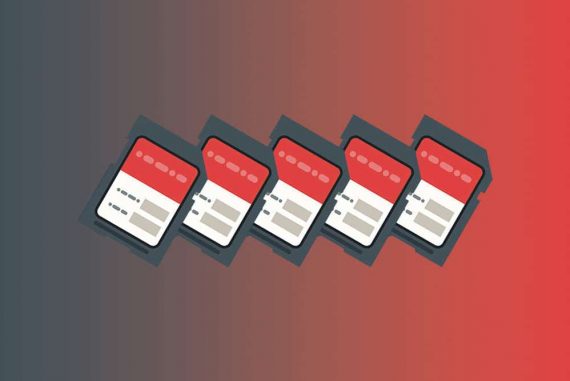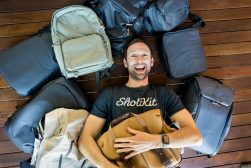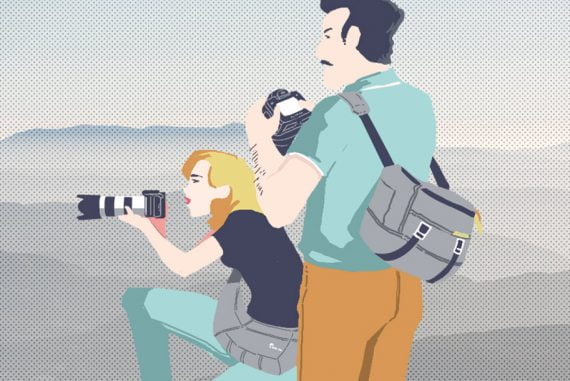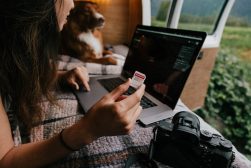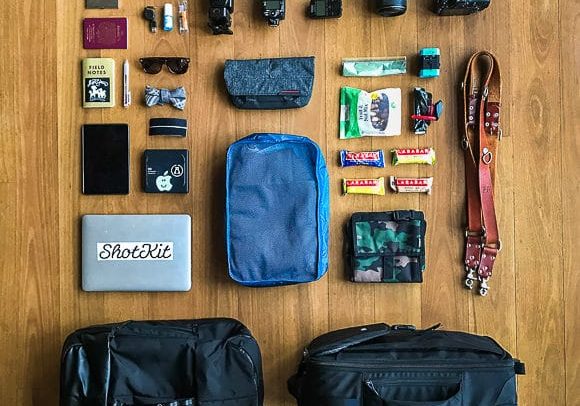
16 Camera Accessories to Enhance Your Photography
Shopping for camera accessories can be confusing (and expensive!) Discover 16 products that can make your photography experience more efficient and enjoyable.
Whenever you’re out buying camera equipment, you’ll find yourself wanting all sorts of items… even if you don’t really need them!
(This is referred to as G.A.S. in photographer circles – Gear Acquisition Syndrome!)
So, if you’re wondering what are the most important camera accessories, this is the guide for you.
It should also save you a lot of time, money, and GAS too!
If you’re looking for accessories for specific camera brands, check out our accessory guides for Fujifilm and Sony.
For everyone else who needs buying recommendations, take a look below:
16 Digital Camera Accessories (& Why you need them)
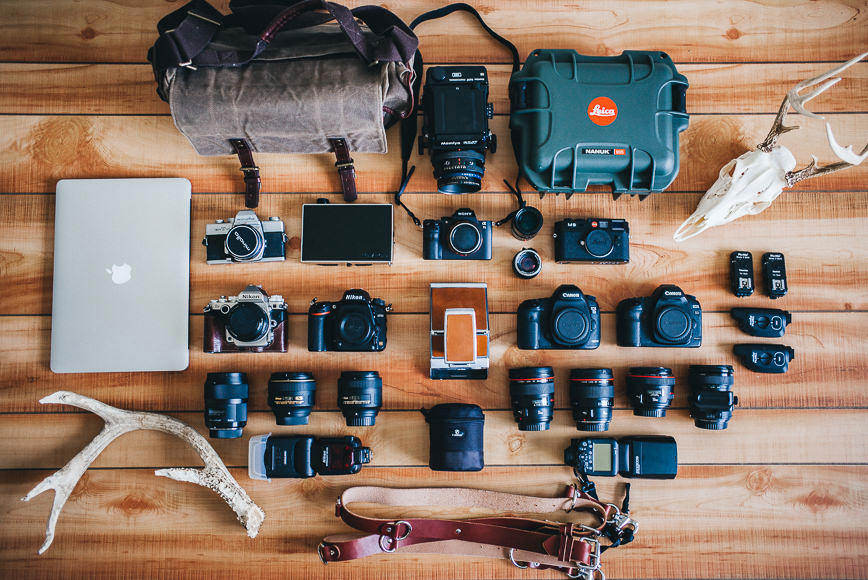
Credit: Jay Cassario
Are you still wondering what accessories you need for your digital camera here in 2024?
I know that browsing photo websites or window-shopping at the store can tempt you to buy lots of alluring things. But unless you have an unlimited budget (and storage space), having a concise shopping list for your camera system will make your decision much easier.
Here’s the camera accessories list I recommend, in no specific order of priority – this will depend on the photo results you need to achieve or the problem you’re trying to solve.
1. Lens Cleaning Kit
One of the not so obvious photographer accessories after you buy your camera and lens is a cleaning kit. You want to keep your gear as clean, shiny, and polished as it is right out of the box.
Of course, this won’t replace regular trips for professional cleanings at an authorized center, but it will optimize everyday use.
To clean your lens from any dust or fingerprints you should get a micro-fiber cloth. This inexpensive piece of material can save your very expensive gear from getting scratched.
Also, regularly clean the sensor with an air blower or LensPen, especially if you change lenses on a regular basis.
2. Memory Card
Another immediate purchase after the camera is a memory card, and the more you get into photography, the more memory cards you’ll need!
Certainly one of the most important camera accessories that you, as a photographer, should invest in.
This also depends on the capacity of the card, the size of the images your camera delivers, and the kind of photography you do.
For example, if you’re into sports photography, you’ll probably often shoot in burst mode, and that goes through the storage space very quickly.
When you’re buying your memory cards you’ll need to consider the format, the speed, and the capacity.
3. Tripod
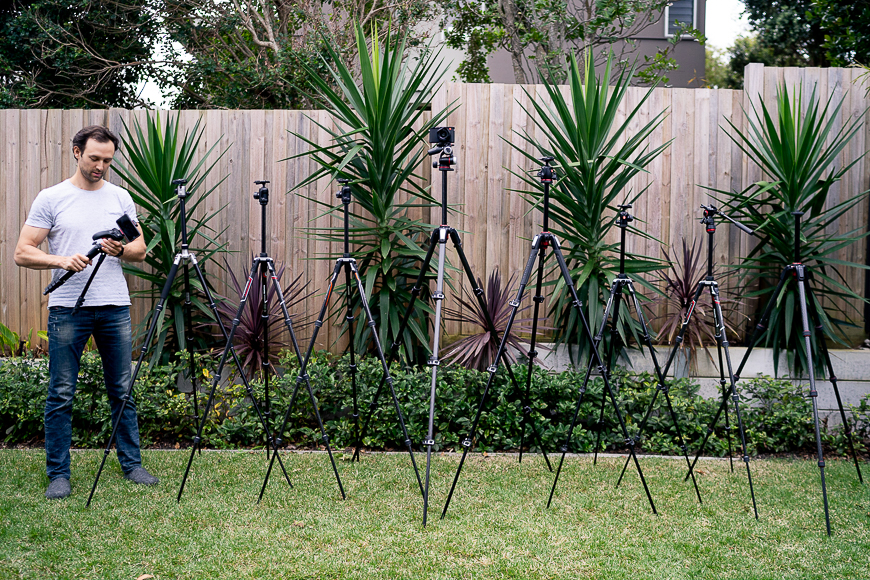
This is one of the photographer’s must have camera accessories.
Think of tripods as the things that hold cameras.
Everyone should have a tripod in their gear. It can be a small and light travel tripod or a heavy full-size studio one, this will depend on your own needs.
Whatever the case, a tripod can be useful for many things. The first and most common is to avoid camera shake, having your camera stable will give you more freedom to move the settings for long exposures.
This can be useful for creative purposes when doing long-exposure photographs, or practical reasons if you’re dealing with low-light situations.
A tripod can be of help too when you need to keep a steady composition, for example when you’re doing food or product photography. Or when you need a precise focus, as you do in macro shots.
When you choose a tripod you need to consider the material, for example, carbon fibre is lighter than aluminum, but it comes with a price. However, if you’re planning on taking it on the road, weight can be a big issue.
Also, check the head of the tripod. A ball head will give you a lot of versatility, but a pan and tilt head gives you more control over small adjustments. Some brands make their tripods so that the head is interchangeable.
And if you don’t have a camera to hand, use a phone tripod to make the most of the convenience of smartphone photography.
4. Protective Wraps
Sometimes, you may want to take your camera with you but you can’t bring a dedicated camera bag – perhaps it’s too bulky or because it will grab too much attention.
Either way, putting it inside a normal bag or backpack might be the best choice, but then you’ll need to provide extra protection.
A protective wrap is a perfect solution for these situations. It won’t take up any extra space and it will keep your camera from getting scratched with other things in the bag.
It will also provide some cushioning to protect the camera from light bumps… although this won’t be of help for rough handling, so be careful.
This is one of the accessories for cameras that you would thank yourself when you do need it.
5. Camera Bags
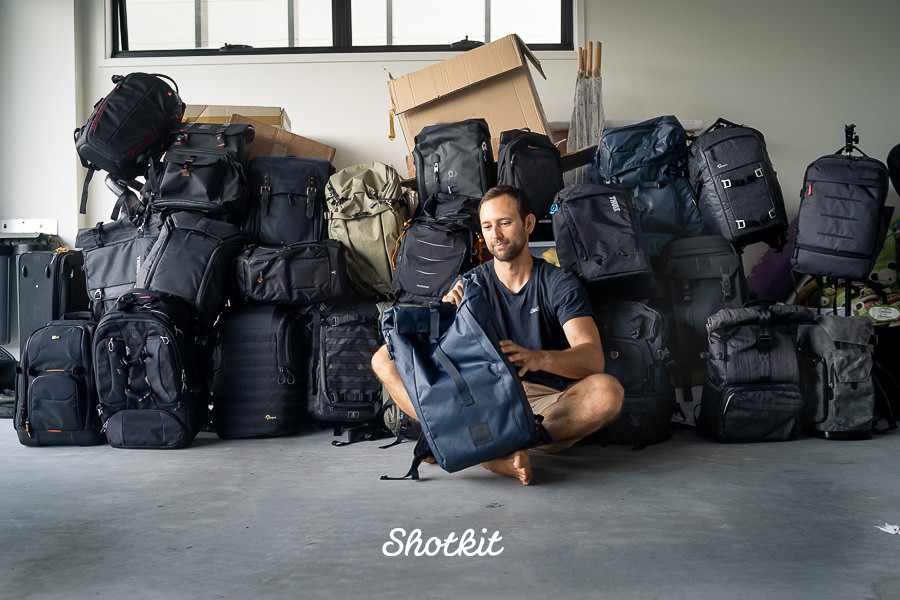
Camera bags come in many different styles. You can choose a backpack, a shoulder bag, a messenger camera bag, a holster bag, or a sling bag. They can open on the side or on the front. They will have one or more compartments for other gear, etc.
There’s a wide variety for you to choose from and many people have more than one – check our guide to camera backpacks for some popular ones.
The most important thing to consider in a camera bag is quality because it will be holding very variable equipment.
Then, make sure that it gives you easy access to your equipment. Consider also size and weight because it needs to fit the equipment without damaging it but still be comfortable for you to carry.
Pro tip: A good camera bag is one of the most essential photography accessories. Invest in quality ones and you should be set for a long time.
6. Lens Filters
From all the lens filters that you’ll see on the market, some are more essential than others.
Polarizing filter – a very versatile and practical filter. It’s mostly used for landscapes because it deepens blue skies. It’s also valuable for removing reflections by avoiding any clipping in the highlights which makes it useful for anything with a reflective surface. Seeing these bad boys in action is pretty cool too making them cool camera accessories to have.
These filters are divided into two categories: circular (CPL) and linear. The results that you get with both are the same, but the circular one will work better with the metering system of your camera.
UV filter – If you do film photography this is an essential camera accessory. If you shoot digital, then its use is debatable.
Many photographers (myself included) stick by its importance, and yes in many cases this is because we started out with film photography. However, even if digital sensors are not sensitive to UV rays, it can’t hurt to put a filter on, if nothing else, to protect the lens from dust and scratches.
ND filters – Neutral density filters are a must-have for long exposures. With them, you can reduce the intensity of light and therefore make longer exposure times.
7. Lens Hood
This accessory is used to prevent glare. You simply attach it to the front of the lens and it will block the glare from a light source coming in from the side.
(Some photographers also use them as protection for their lens from knocks.)
Lens hoods come in many shapes and sizes. Some of the most common are three petals and cylindrical, but you can also find conical or four different-sized petals.
They’re not expensive and can save many of your shots. Usually, they’re included with the lens purchase.
8. Remote Shutter Release
This accessory allows you to fire off your camera from far away. This can come in handy if you’re doing a self-portrait, shooting from the top down, or using a slow shutter speed that can be sensible to the slightest movement.
You can find wireless or cable remote shutter releases.
9. Bubble Level
Most tripods include a bubble level so you can balance your camera, but what about working handheld?
There are some bubble levels that you can attach to the camera’s hot shoe and make sure that the camera is straight with the horizon. You can also buy them with 2 or 3 axes to align your camera to more planes.
10. Camera Strap
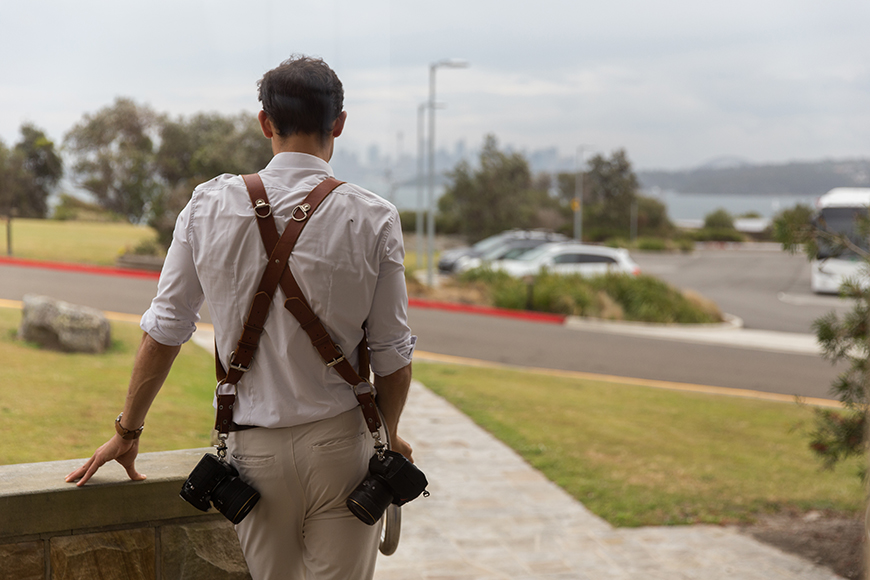
I know what you’re thinking: Why buy a strap if the camera already comes with one? Yes, that’s true but the kit camera strap is not particularly comfortable or attractive.
If you’re out shooting the entire day, a neck strap can be uncomfortable and cause you to end up with pain. That’s when a different strap is needed.
Sling or cross-body straps – hangs from one of your shoulders, so you can switch from one to the other as you need to rest. You can also use it across the chest to distribute the weight more evenly.
Many wedding photographers find this style to be the best, not only to carry around for 8 hours but also because you can use two of them at a time to carry two cameras.
Wrist and hand straps – these camera attachments are mostly used with small or lightweight cameras like the mirrorless system. It gives a break to your neck and shoulders while keeping your camera (literally) on hand.
11. Nifty Fifty
If you want to up your photography game, you should have one of the best camera accessories you can buy. A range of focal lengths is always important, especially if you are just moving up from your kit zoom lens.
One of the most versatile camera lenses that you can buy as a fast prime lens is a 50mm, also known as the nifty fifty. The image quality that you can get with it is amazing, especially for the price.
50mm is known as a ‘normal’ or ‘standard’ lens, which means that you won’t get any distortion. You’ll also capture the scene and subject as closely as possible as to how we perceive them with the naked eye.
Also, these types of lenses have a maximum aperture of f/1.4 or f/1.8 for very reasonable prices, allowing you to blur the background on the cheap!
12. Camera Flash
This is one of the must-have camera accessories. An on-camera flash comes in different models. A Speedlite or flashgun is commonly the first artificial lighting that you’ll come across, and it will become a faithful companion.
The more you grow, the more models you might need – for example, you can get a ring flash for portraits. You can also get all sorts of accessories and modifiers to make them more versatile.
Some of the most popular ones are softboxes, arm brackets, and filters. You can also grow into studio photography, putting the Speedlites on tripods and using them as strobes.
13. Photo-editing Software
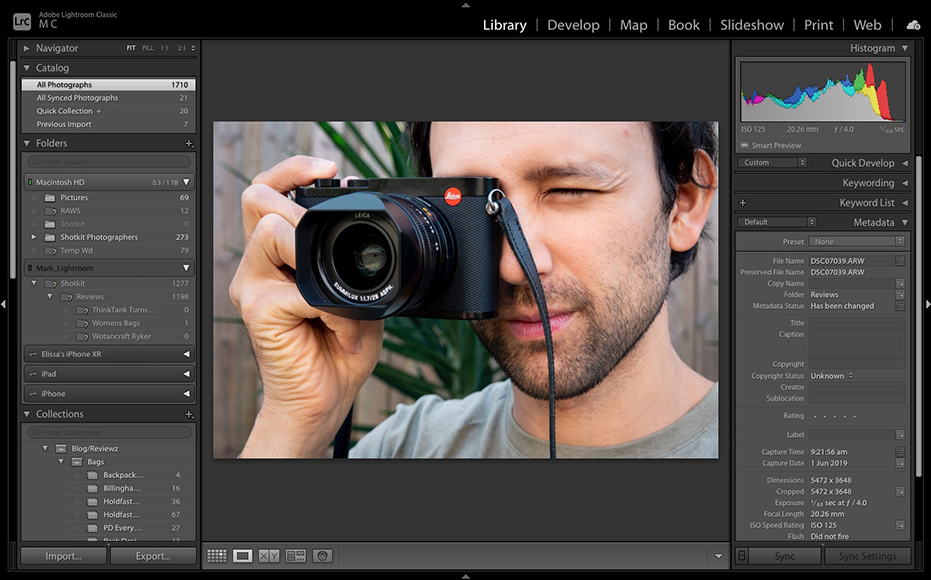
No matter your photography standard or experience with image manipulation/retouching, all photographers need to have photo editing software.
Think of editing like the icing on the cake – without it, your photo won’t be its very best.
The industry standard for digital image editing the Adobe Creative Cloud which includes Photoshop and Lightroom, but these incur a subscription fee.
Thankfully, there are several other great programs side from the Adobe apps to choose from here in 2024, so you’re likely to find something for your exact needs and budget.
14. Extra Batteries and Battery Grip
This is one of the best photography accessories that any photographer of any skill level should have. Depending on the kind of photography that you do, you might find yourself working long hours before you can go back to the studio, so you need to have some extra batteries with you.
Even if you work in the studio and have long photoshoots, you might want at least one extra battery to use while you recharge the first one, and so on.
Consider getting a battery grip if you shoot in these conditions often. With a battery grip you can have your extra batteries attached to the camera, and at the same time have a bit of extra grip to make hand-holding the camera for long periods more comfortable.
Some of them even include a continuous mode feature that boosts the burst rate and an extra shutter button on the side for holding the camera in portrait orientation.
15. Tethering Cable
If instead of outdoors you shoot mostly in the studio, then I recommend you get a tethering cable – it’s one of the professional camera accessories, so if you’re a newcomer to photography, it may not be essential just yet.
With one, you can connect your camera to your computer and have a live view of the shot. This is excellent for composing and styling your images.
It’s also much appreciated by clients because they can see what you’re doing and they can let you know if they need something different.
You can also save your images directly as you shoot them, with some editing software also applying presets to photos as they appear on the screen.
16. SD card reader
One final important accessory is a memory card reader. SD is the most common card format, but double-check which one your camera uses before buying a card reader.
If you own multiple cameras (or a model that has two different format card slots), there are multi-format card readers available too.
Some photographers prefer to plug the camera into their computer directly, but a reader is much faster. You should also learn how to format SD cards on a Mac.
If you’re doing long photoshoots or events, you can leave your images from one card downloading while you continue to shoot with the next card.
Essential Camera Accessories FAQs
- What are the most important camera accessories?
The most important camera accessories depend on the style of photography you undertake. For most genres of photography, you’ll need a camera bag or backpack, and a lightweight tripod. You’ll also need to have spare batteries for your camera and fresh memory cards.
- What accessories do I need for a DSLR camera?
The accessories required for a DSLR are much the same as for a mirrorless camera. The most essential camera accessories for a DSLR camera include spare batteries, empty memory cards, and a cleaning kit. In addition, many DSLR camera users pack a travel tripod and set of filters.
- What should you carry in your camera bag?
Everyone packs different accessories into their camera bag to suit their photography genre. You should pack a lightweight tripod, spare batteries, memory cards, and a cleaning cloth in your camera bag or backpack. If you shoot landscape photography, you’ll need to also back a remote shutter release, polarizing and neutral density filters, and a memory card reader.
- What is camera equipment?
Camera equipment is a term used to describe a collection of photographic gear including cameras, lenses, and essential camera accessories.
- Where can I buy camera accessories?
All camera accessories can be purchased from a camera retail outlet – in-store or online. Some camera accessories are available from larger department stores, and memory cards are available at supermarkets and electronics stores.
- What are the best accessories for a beginner photographer?
A beginner photographer with a DLSR or mirrorless camera and lens should also purchase at least one additional battery and two spare memory cards. If they intend to shoot landscapes, they should also invest in a tripod, polarizing filter, and a neutral density (ND) filter to help manage exposure.
- What are the necessary camera accessories?
Here’s a list of some of the necessary camera accessories you’ll need to capture stunning photos and videos:
- Cleaning kit
- Tripod
- Flashlight
- Some spare batteries
- Remote shutter release
- Various filters
- Extra memory cards
- Memory card reader
- Camera bag
- Camera shoulder/wrist straps
Final Words
I hope you found this guide helpful to start building up your equipment that will be helpful in making your photography more efficient, convenient and fun!
Once you have the essentials, you can consider buying something that can expand your business in other directions, like video accessories. Or invest in anything that improves your editing workflow, like a powerful desktop computer.
Let us know what else you consider to be a valuable addition to your camera bag.





